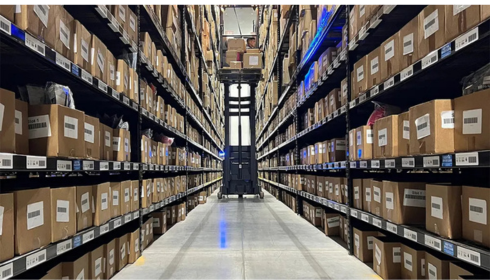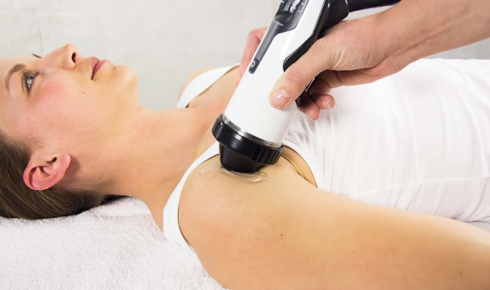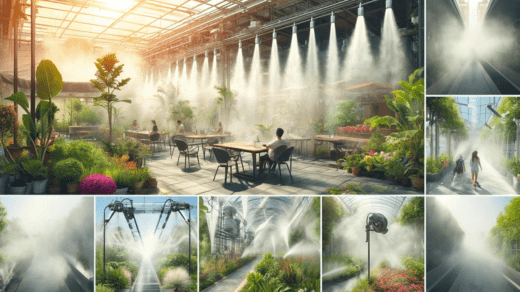Water misting systems are rapidly becoming an essential solution for cooling and humidifying environments in various settings. These systems offer a versatile and efficient way to manage temperature and moisture levels, making them invaluable in both residential and commercial spaces. In this comprehensive guide, we will delve into the intricacies of water misting systems, their applications, benefits, and maintenance tips to ensure you get the most out of your investment.
Understanding Water Misting Systems
What are Water Misting Systems?
Water misting systems are specialized setups that disperse fine droplets of water into the air to reduce ambient temperature and increase humidity. These systems typically consist of a high-pressure pump, tubing, and misting nozzles. The pump pressurizes the water, which is then forced through the nozzles to create a mist.
How Do They Work?
The principle behind water misting systems is relatively simple. When the fine mist is released into the air, it evaporates quickly. This process, known as evaporative cooling, absorbs heat from the surrounding environment, thereby reducing the overall temperature. The size of the water droplets is crucial, as smaller droplets evaporate more quickly, leading to more efficient cooling.
Applications of Water Misting Systems
Residential Use
In residential settings, water misting systems are often used to cool patios, gardens, and outdoor living spaces. They provide a refreshing atmosphere, making it more comfortable to spend time outside during hot weather.
Commercial and Industrial Use
In commercial and industrial environments, water misting systems are employed to cool large areas such as warehouses, factories, and greenhouses. They help maintain optimal working conditions and protect sensitive equipment and products from overheating.
Agricultural Use
Water misting systems are also widely used in agriculture to cool livestock and poultry, ensuring their comfort and productivity. Additionally, they are utilized in horticulture to maintain the humidity levels necessary for plant growth.
Benefits of Water Misting Systems
Efficient Cooling
One of the primary benefits of water misting systems is their ability to provide efficient cooling. By lowering the ambient temperature through evaporative cooling, these systems can reduce the reliance on traditional air conditioning, leading to significant energy savings.
Dust Suppression
Water misting systems are effective at suppressing dust and other airborne particles. This makes them ideal for use in environments where air quality is a concern, such as construction sites and manufacturing plants.
Enhanced Comfort
For outdoor events and recreational areas, water misting systems enhance comfort by creating a cooler and more pleasant environment. This can be particularly beneficial in hot climates where heat can be a major deterrent to outdoor activities.
Increased Productivity
In industrial settings, maintaining a cooler environment can lead to increased productivity. Workers are less likely to suffer from heat-related illnesses and can perform their tasks more efficiently in a cooler, more comfortable setting.
Types of Water Misting Systems
Low-Pressure Misting Systems
Low-pressure misting systems operate at pressures below 100 psi. They are typically less expensive and easier to install, making them a popular choice for residential use. However, they produce larger water droplets, which may not evaporate as quickly, leading to a damp environment.
High-Pressure Misting Systems
High-pressure misting systems operate at pressures between 250 and 1,500 psi. These systems produce much finer mist, which evaporates quickly and provides more effective cooling without leaving surfaces wet. High-pressure systems are commonly used in commercial and industrial applications.
Mid-Pressure Misting Systems
Mid-pressure misting systems operate at pressures between 100 and 250 psi. They offer a balance between cost and performance, making them suitable for a wide range of applications, including residential and light commercial use.
Installation and Maintenance
Installation Tips
- Assess the Area: Before installing a water misting system, it is crucial to assess the area to determine the best locations for the nozzles and tubing. Consider factors such as wind direction and the size of the space.
- Choose the Right Components: Select high-quality components, including the pump, tubing, and nozzles, to ensure the system’s efficiency and longevity.
- Professional Installation: For optimal performance, consider hiring a professional to install the system. Proper installation is key to avoiding leaks and ensuring even mist distribution.
Maintenance Tips
- Regular Cleaning: Clean the nozzles regularly to prevent clogs and ensure consistent mist output. Use a mixture of vinegar and water to dissolve any mineral deposits.
- Check for Leaks: Inspect the tubing and connections periodically for leaks. Tighten any loose fittings and replace damaged components as needed.
- Winterization: In colder climates, it is essential to winterize the system to prevent damage from freezing. Drain all water from the system and store the components in a dry, protected area.
Conclusion
Water misting systems offer an efficient and versatile solution for cooling and humidifying various environments. Whether for residential, commercial, or agricultural use, these systems provide numerous benefits, including efficient cooling, dust suppression, and enhanced comfort. By understanding the different types of misting systems and following proper installation and maintenance practices, you can maximize the effectiveness and longevity of your water misting system.






